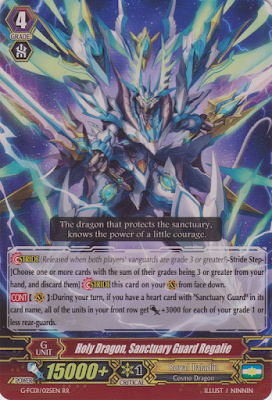For Aqua Force, it's focus is on attack order and positioning. Whether or not the deck has been focused on activating skills when the vanguard attacks 4th, the deck has always paid attention to attack number and order, and so many of it's cards have been designed around setting up an extra attack without reliance on unpredictable stand triggers. In this short series we'll be examining these enabler units, as well as taking a glance into how they slotted into the clan at the time.
 |
| Back in the day, you used him or you used another clan. |
 |
| The Grade 3 we needed, but not the one we deserved |
 |
| Well at least he can boost things |
 | |
| Wave-like Spirals = Whirlpools It's elementary, dear Watson |
Set 11, Seal Dragons Unleashed, shifted the focus of the mechanic from attack count to attack pattern. For this set, and this set alone, no-one would require a specific attack number. Instead the aces of the set would want a resting front row, and the Break Ride itself, effective as it was, lacked any specifics so as not to conflict with any of the existing or new bosses. No enablers made their way into the set, although it did give the grade 1 and 2 Brave Shooters, which made ideal switch-in units to put behind a storm rider.
Aqua Force's 4th attack plays would return in Catastrophic Outbreak, with Blue Wave Dragon, Tetra-drive Dragon, who played with the formula somewhat. Whereas previously the vanguard had simply triggered a skill on the third or fourth attack, Tetra-Drive's Limit Break activated at the end of second battle - but simply gave it a skill which would only trigger if the 4th attack was against a vanguard. Since this skill was to re-stand the vanguard, this was worth the effort to set up, and the synergy with the break ride in particular made this something you really didn't want to leave up to chance (that is, finding a stand trigger)
 |
| I'm sittin' on the dock of the bay, Watching my Tidal crit away |
 |
| The clan progressed right past him. Oh well. |
In part two of this series, we'll be looking at the enablers brought with the Blue Storm Armada, and the new toys the new generation brought along.



